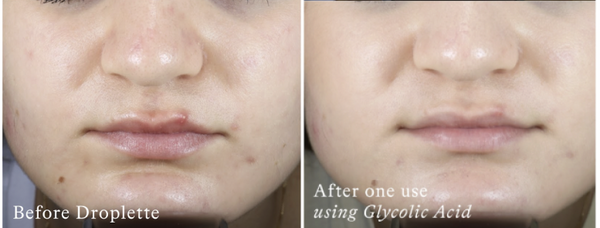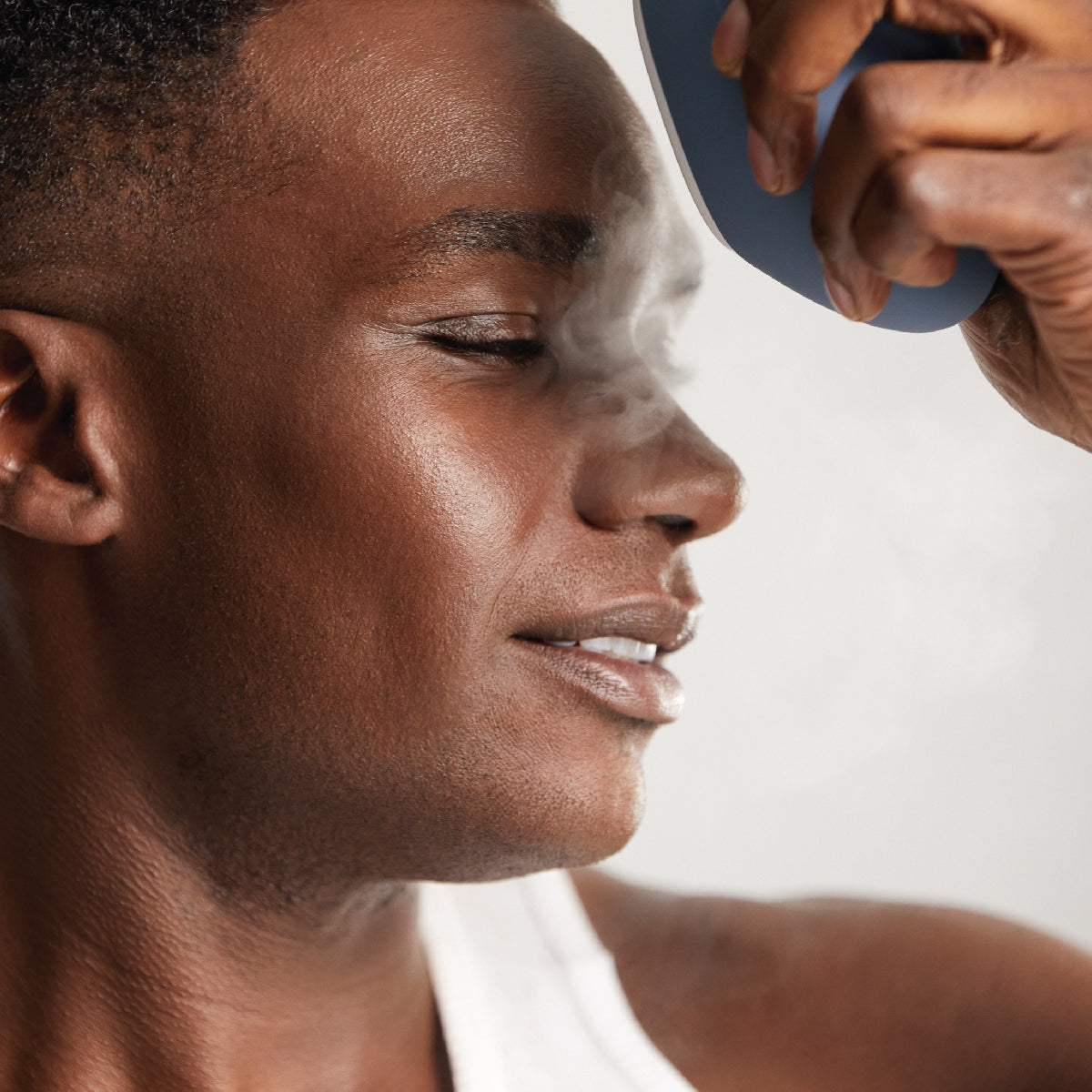What Is Glycolic Acid?
Glycolic acid is an alpha hydroxy acid (AHA). AHAs are a group of organic acids that naturally occur in certain foods and are used as chemical exfoliants in skincare (synthetic versions are also found in many products). AHAs are water-soluble and work on the skin’s surface, unlike beta hydroxy acids (BHAs), which are oil-soluble and work beneath the skin’s surface within the pores.
Glycolic acid is derived from sugar cane, and is the most popular AHA in skincare. It works to speed cell turnover by breaking the bonds between dead skin cells so that the dull outer layer can be sloughed away to reveal the fresh, glowing layer beneath.
The Benefits of Glycolic Acid for Your Skin
Glycolic acid has a wide-ranging list of benefits for skin, making it a multi-tasking ingredient that can improve just about any complexion. Glycolic acid has been shown to:
-
Reduce the Appearance of Fine Lines and Wrinkles:
It helps to bind moisture to the skin and stimulate collagen production, making skin appear plumper and more youthful.
-
Improve Skin Tone and Texture:
It dissolves the “glue” that holds dead skin cells together, clearing them away and revealing a smoother, more even surface.
-
Reduce the Appearance of Acne and Blemishes
It can be helpful for acne-prone, oily skin types, as it helps to clear out and visibly minimize pores and prevent breakouts.
-
Fade Dark Spots and Hyperpigmentation
It can treat sun damage, melasma, and other pigmentation issues by helping to disperse melanin as it exfoliates dead cells.
Glycolic Acid in Skincare Products
The skincare world is filled with products that are formulated with glycolic acid, including cleansers, toners, serums, peels, and masks. While these products can certainly achieve results, they’re all topicals—which means they’re not really being delivered as deeply as they could be.
That’s where Droplette comes in: the micro-infuser device uses fluid physics to transform the active ingredients in our glycolic acid serum capsules into a fine mist that’s clinically proven to get them 20x deeper into the skin than topicals, where they’ll be up to 90% more effective.
So if you’re looking for a way to get the most out of glycolic acid, our Glycolic Acid Illuminator Set is the perfect place to start. It bundles a Droplette device with a 12- or 30-pack supply of our glycolic acid serum capsules, making it simple to incorporate glycolic into your regimen.
Glycolic Acid Compared to Other AHAs
While glycolic acid is the most widely used AHA, it’s not the only one. AHAs come from several different sources, and while many of their benefits overlap, each has different strengths. Aside from glycolic acid, other common AHAs used in skincare in order of molecular size from smallest (and most potent) to largest (and mildest) are:
-
Lactic Acid
Derived from milk, lactic acid works well for improving texture and tone. It’s milder than glycolic acid, but also penetrates less deeply and more slowly. However, it’s still a powerful acid that can carry a formula on its own.
-
Malic Acid
Derived from apples, malic acid is a mid-sized AHA that has humectant effects and is known for its skin-brightening ability.
-
Tartaric Acid
Derived from grapes, tartaric acid is often combined with stronger AHAs to help stabilize their pH levels, and can sometimes help provide more targeted exfoliation.
-
Citric Acid
Derived from citrus fruits such as oranges, lemons, and limes, this milder AHA has antioxidant properties, helps to eliminate impurities, and acts as a preservative to keep formulas fresher longer.
-
Mandelic Acid
Derived from bitter almonds, this AHA has antibacterial properties, and contains the largest molecules of all, making it a good choice for sensitive skin and hyperpigmentation. However, its mildness means it’s usually not as effective on its own.
How does glycolic stack up against the rest? It has the smallest molecule size of all the AHAs, meaning it delivers maximum penetration and potency. Aside from lactic acid, most other AHAs act more like supporting players in skincare formulas, complementing and enhancing power players like glycolic.
Possible Side Effects of Glycolic Acid
While glycolic acid’s strength makes it seriously effective, it also means that it can have potential side effects. It can cause irritation such as redness, itching, or peeling, as well as dryness. These reactions will usually dissipate over time as your skin adjusts, so start slowly to see how your skin tolerates glycolic acid and work your way up to more frequent use.
Glycolic acid also makes your skin more sensitive to sunlight, so be sure to always apply a broad-spectrum sunscreen with an SPF of at least 30 before heading outside, and avoid applying it on days when you know you’ll be spending lots of time soaking up the sun.
The Advantage of Droplette’s Glycolic Acid Serum
If you’re concerned about adverse reactions, there’s good news: Droplette’s 8% glycolic acid serum formulation also features skin-restoring niacinamide, which is known to be anti-inflammatory as well as helpful in retaining skin’s moisture and reducing the appearance of acne scars. We’ve also added healing peptides and soothing aloe extract to our formula. So while the glycolic acid is working its exfoliating magic, these additional ingredients are simultaneously helping to prevent irritation and keep the skin calm.
Note that despite the soothing additions to our Glycolic Illuminator formula, glycolic acid is still an intensive ingredient, and we recommend starting out by using it once every 2-3 days until you’re sure your skin can handle it daily. Additionally, pairing it with a hydrating formula like our Collagen Hydrofiller capsules can help keep skin comfortably moisturized.
Incorporating Glycolic Acid into Your Skincare Routine
If you’ve decided to give glycolic acid a try, you’re probably wondering about the best way to work it into your existing skincare regimen.
When it comes to order of use, you should cleanse first, then exfoliate (hello, glycolic), and finish with moisturizer. It’s often best to use glycolic acid at night due to increased sun sensitivity, but if you’re using it in the morning, make sure your moisturizer has sun protection—and if it doesn’t, layer an SPF of at least 30 on top.
You’ll also want to consider how glycolic acid might interact with other ingredients. For instance, while it can complement and actually enhance retinol’s effectiveness, it’s important not to mix the two or use them at the same time. Instead, use start slowly and alternate retinol and glycolic on different days, gradually working your way up to more frequent use. The same goes for vitamin C: since it’s also a powerful active ingredient, alternate use with glycolic acid to avoid irritation.”
However, if you’re combining glycolic with something super-hydrating like hyaluronic acid, it’s okay to use them together, as hyaluronic acid can help to counteract any irritation from glycolic acid. You can apply glycolic acid serum first to dry skin, then layer hyaluronic acid on top for a dose of extra moisture.
Droplette makes it easy to incorporate glycolic acid into your routine, but if you have questions about what’s best for your particular skin type, the Droplette app gives you access to free 15-minute video consultations with our licensed in-house estheticians. Click here to download the app, connect your device, and get one-on-one advice about customizing your routine with Glycolic.
Glycolic Acid Serum Capsules: Before & After
Droplette's innovative delivery system ensures glycolic acid penetrates deeper and more rapidly into the skin, providing a more even distribution for a thorough exfoliation. This enhanced absorption mimics the effects of a gentle chemical peel at home, promoting smoother, rejuvenated skin with improved texture and clarity.

Glycolic Acid FAQs
Can I use glycolic acid with retinol?
Yes, but once again, they should always be used in an alternating schedule and never mixed at the same time. For a foolproof routine, try our Radiant Detox Prescriptive Regimen, which combines an optimal blend of our glycolic, retinol, and collagen capsules. Click here to learn more about how to use these two ingredients together.
Is it safe to use glycolic acid every day?
Yes, but if you’re new to chemical exfoliants, don’t start with daily use. Begin by using it once a week and see how your skin reacts, then gradually work up to 2-3 times a week. If your skin tolerates it well, you can eventually use glycolic acid every day, but only if you’re not using other active ingredients like retinol on the same day.
Does glycolic acid help with dark spots?
Yes—along with its other numerous benefits, it can help to fade dark spots, age spots, and melasma via exfoliation. If you’re looking for a more targeted method of tackling hyperpigmentation, try tranexamic acid, which helps to inhibit melanin production.
How do I choose the right Droplette serum capsules for my skin?
It’s important to determine your skin type before deciding which capsules are the best option. Assess your skin after cleansing to see if it falls into the oily, dry, combination, sensitive, or normal category. Then determine which issues you’re looking to treat, and match it with the capsules designed to address those concerns. You can customize a device and capsule set here, or contact one of our licensed estheticians for advice by downloading the Droplette app.
Get Glowing with Glycolic Acid
It’s clear that glycolic acid is a big name in skincare for a reason: it tackles a wide spectrum of skin concerns, including fine lines and wrinkles, tone and texture, acne and blemishes, and dark spots and hyperpigmentation. Its small particle size means it can penetrate deeply and get the job done effectively. And it’s safe for all skin types when used properly.
On top of all that, when our Glycolic Illuminator capsules are used with Droplette’s micro-infusion technology, this power ingredient’s particles are made even tinier and delivered even more deeply into the skin—along with soothing, hydrating ingredients that help counteract potential irritation.
If you’re looking to give glycolic acid a shot, you’ll find it in countless products and forms. But if you want to get the maximum benefits with minimal side effects, take your glycolic journey to the next level with Droplette’s Glycolic Illuminator Set and experience the power of the world’s most advanced skincare system.


